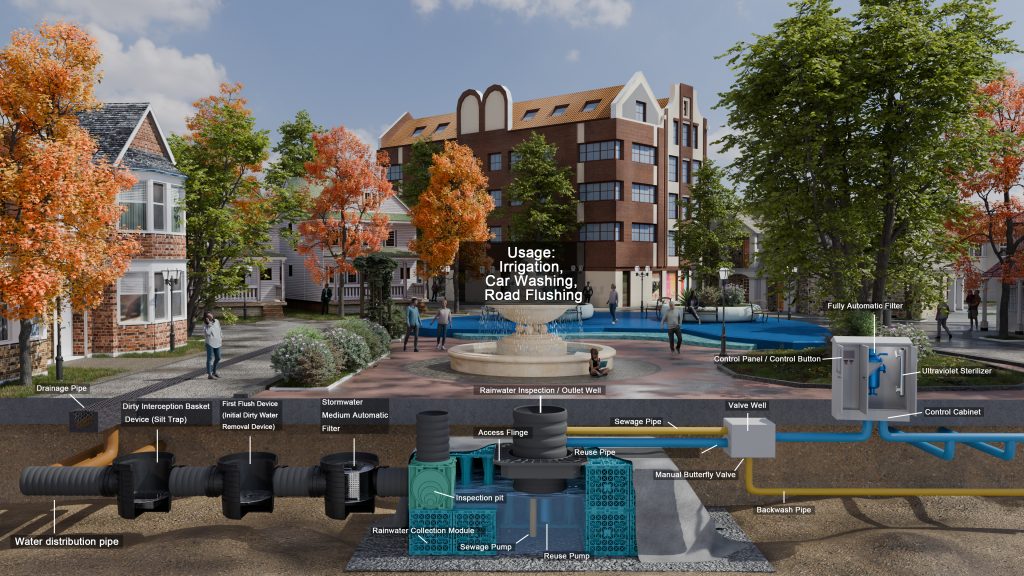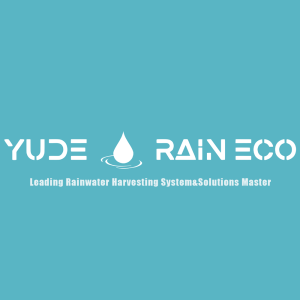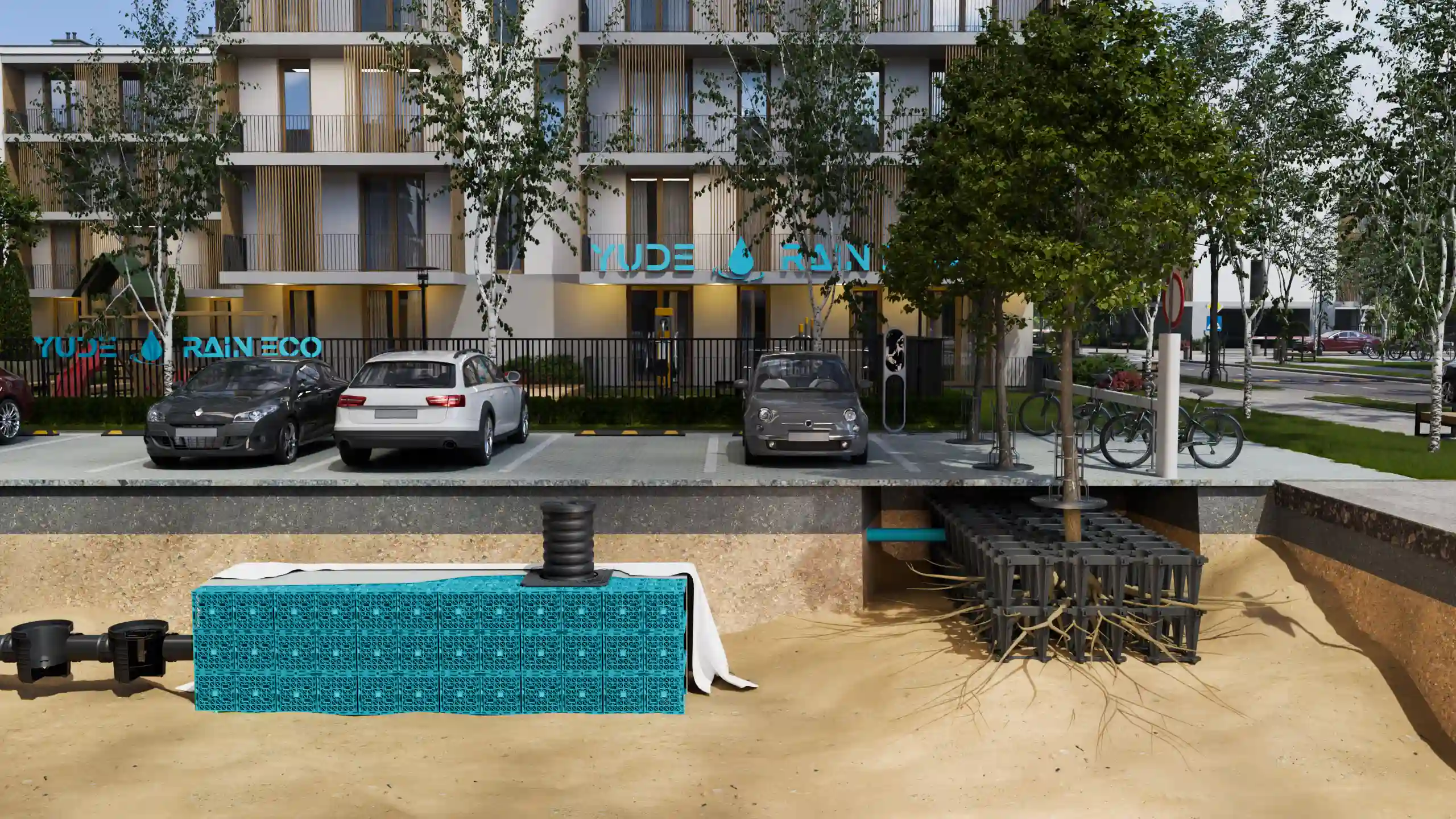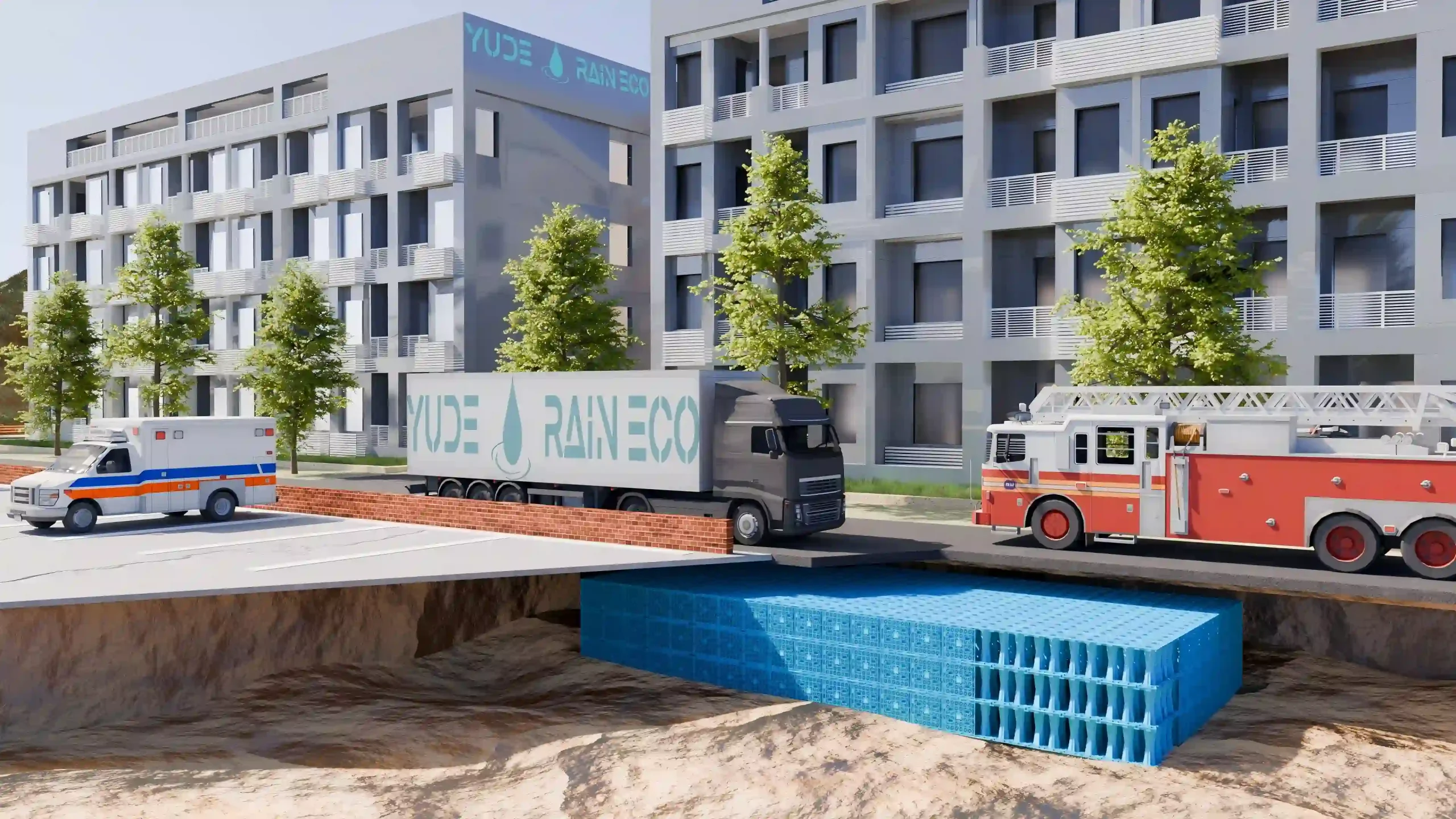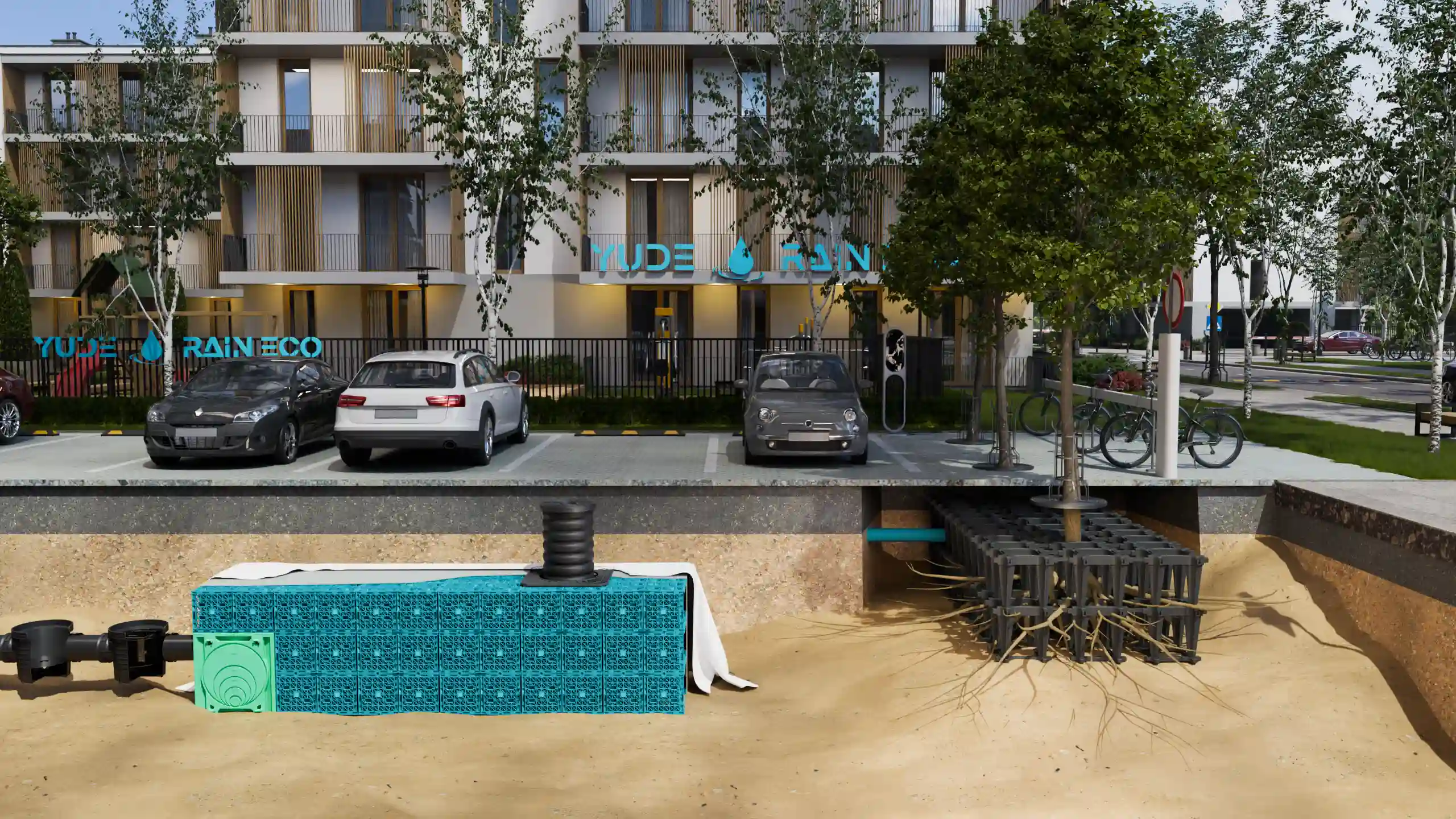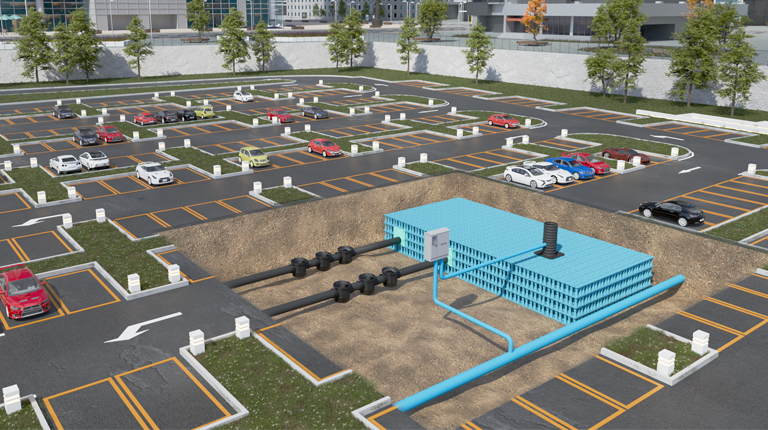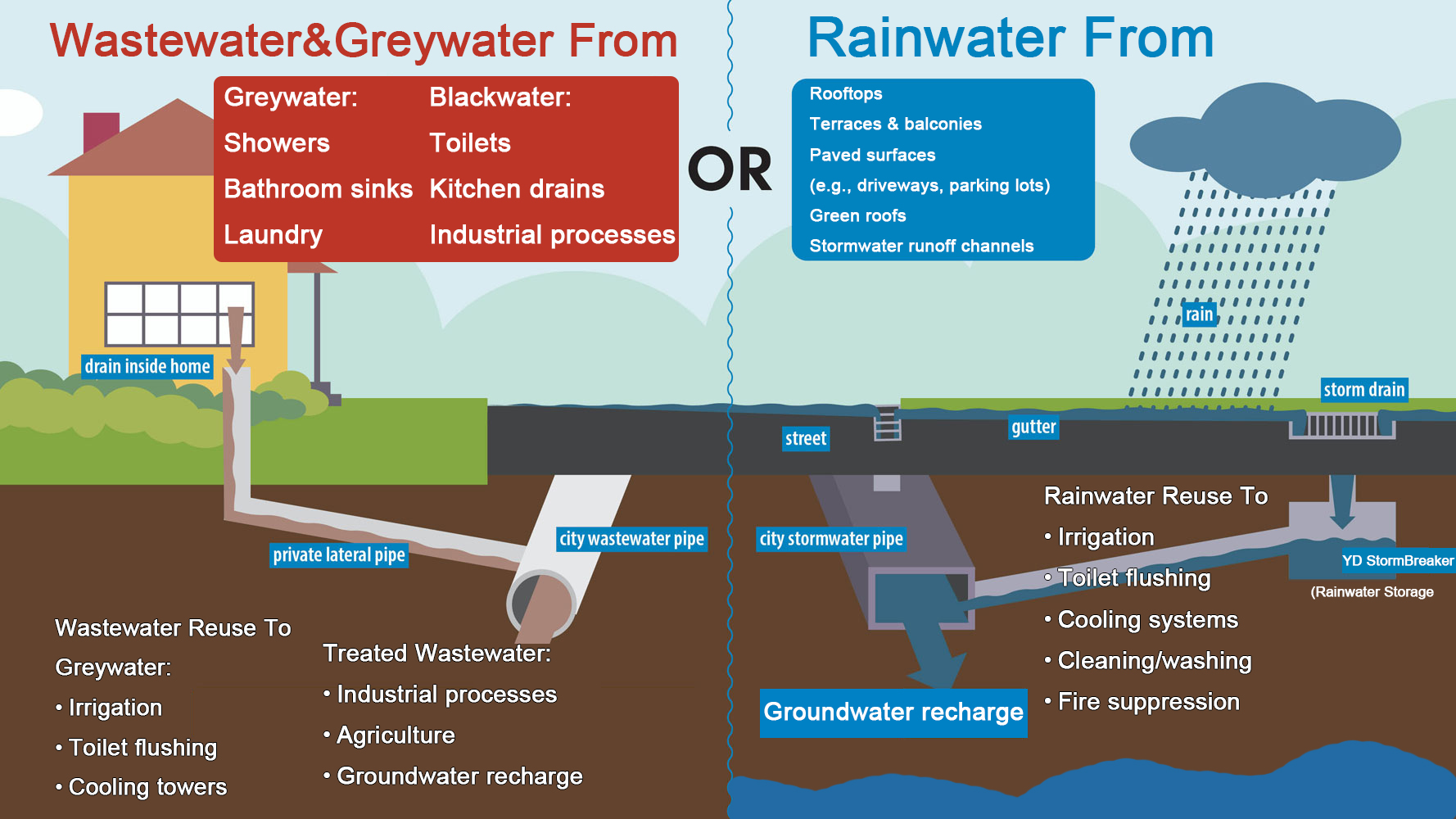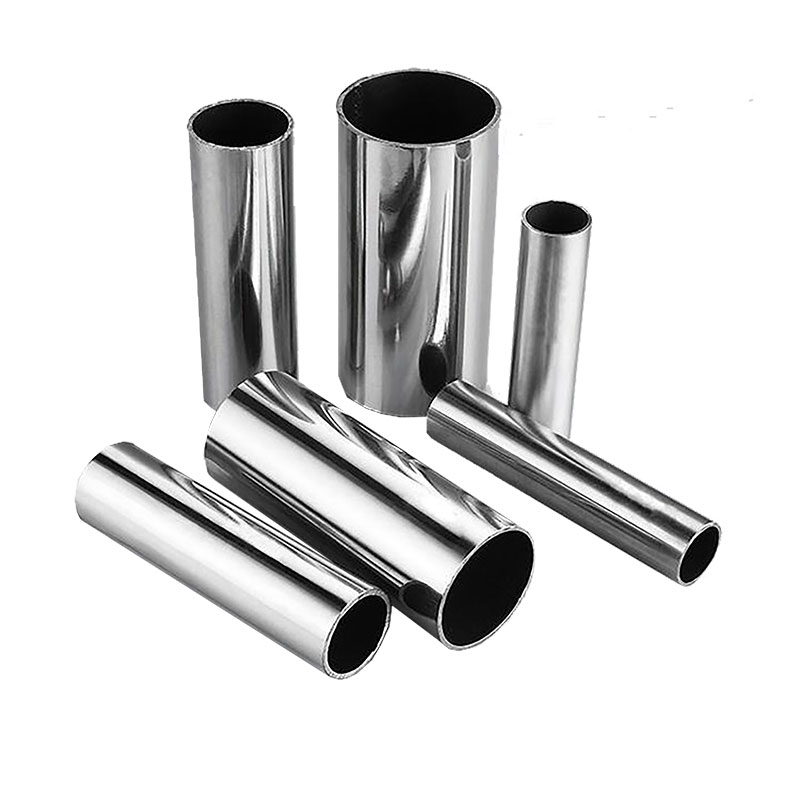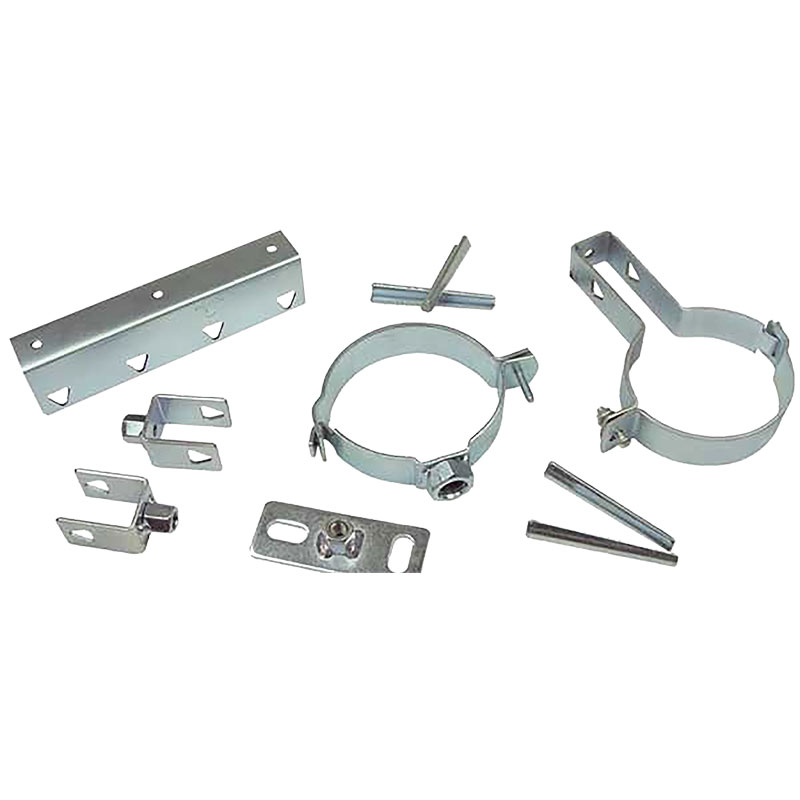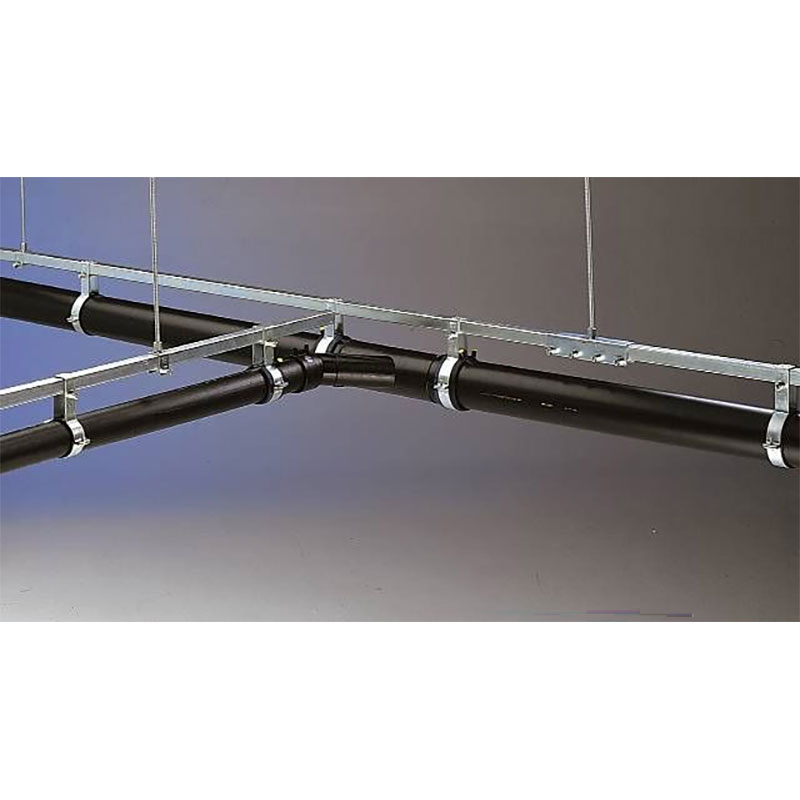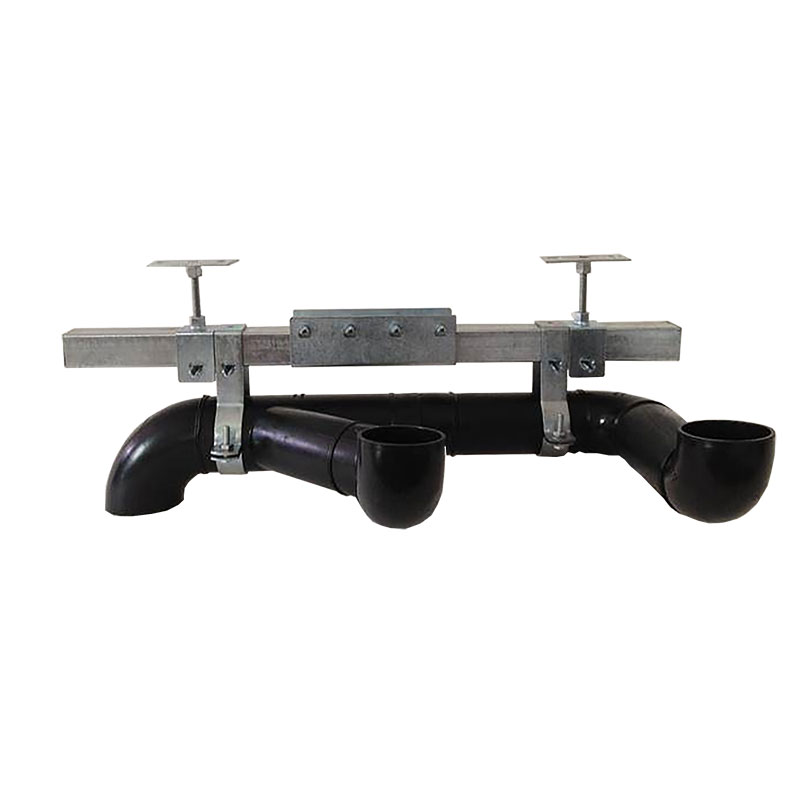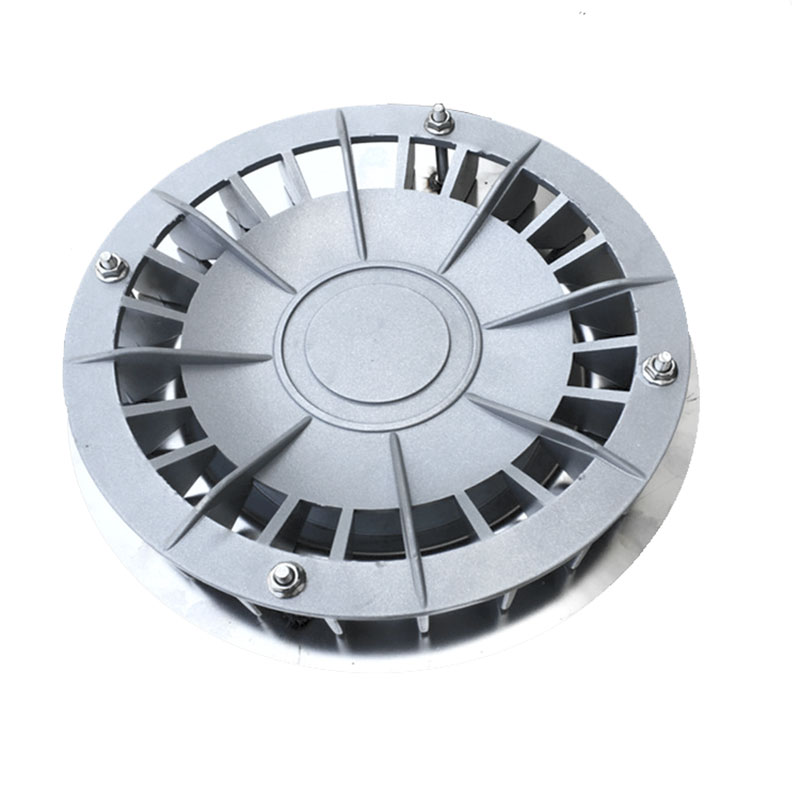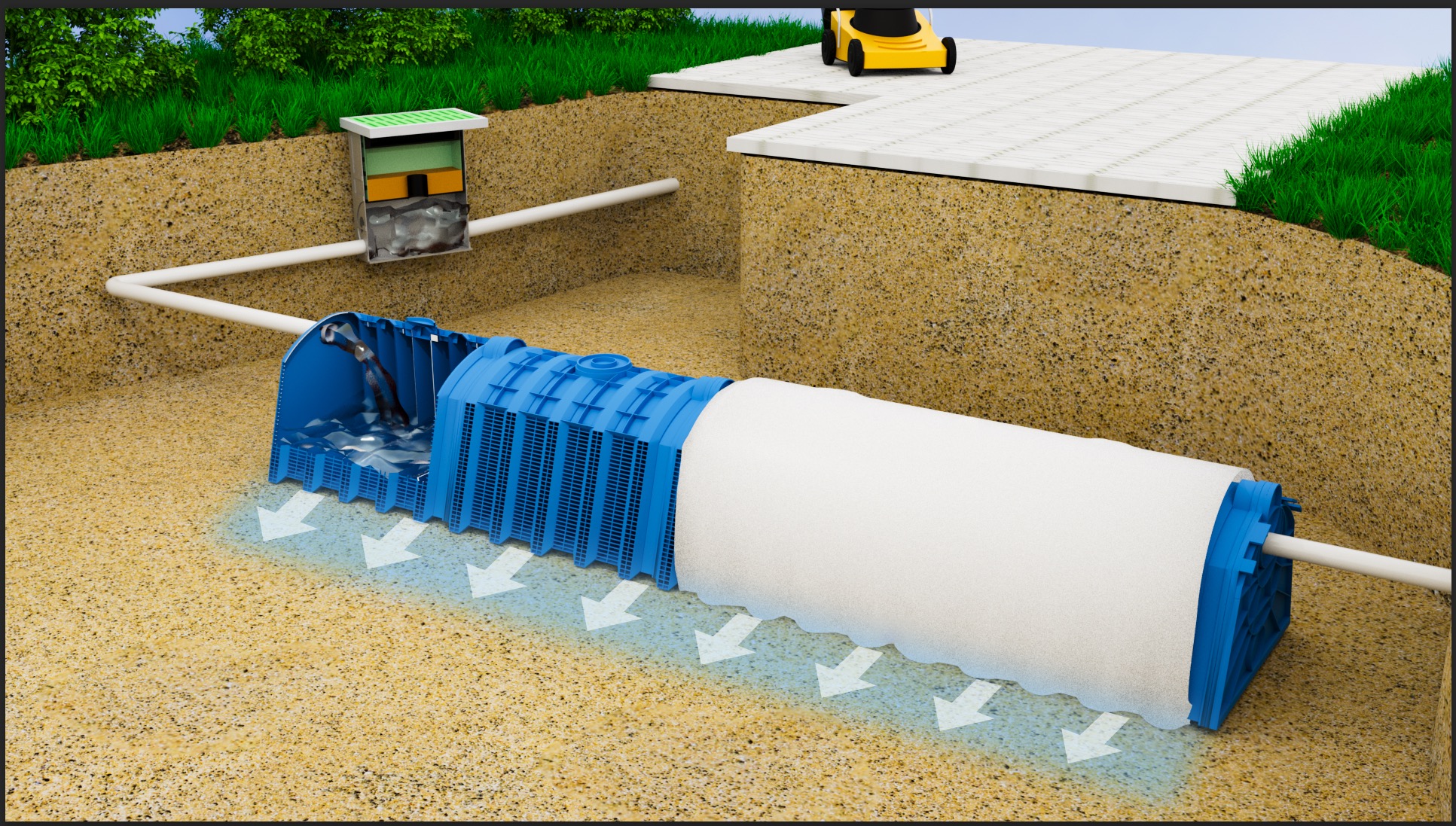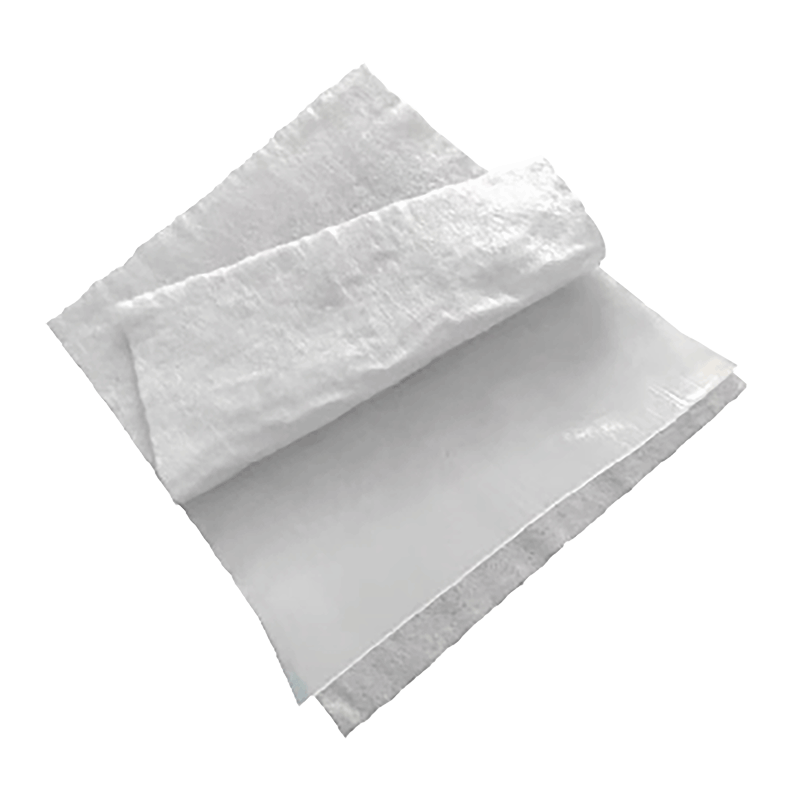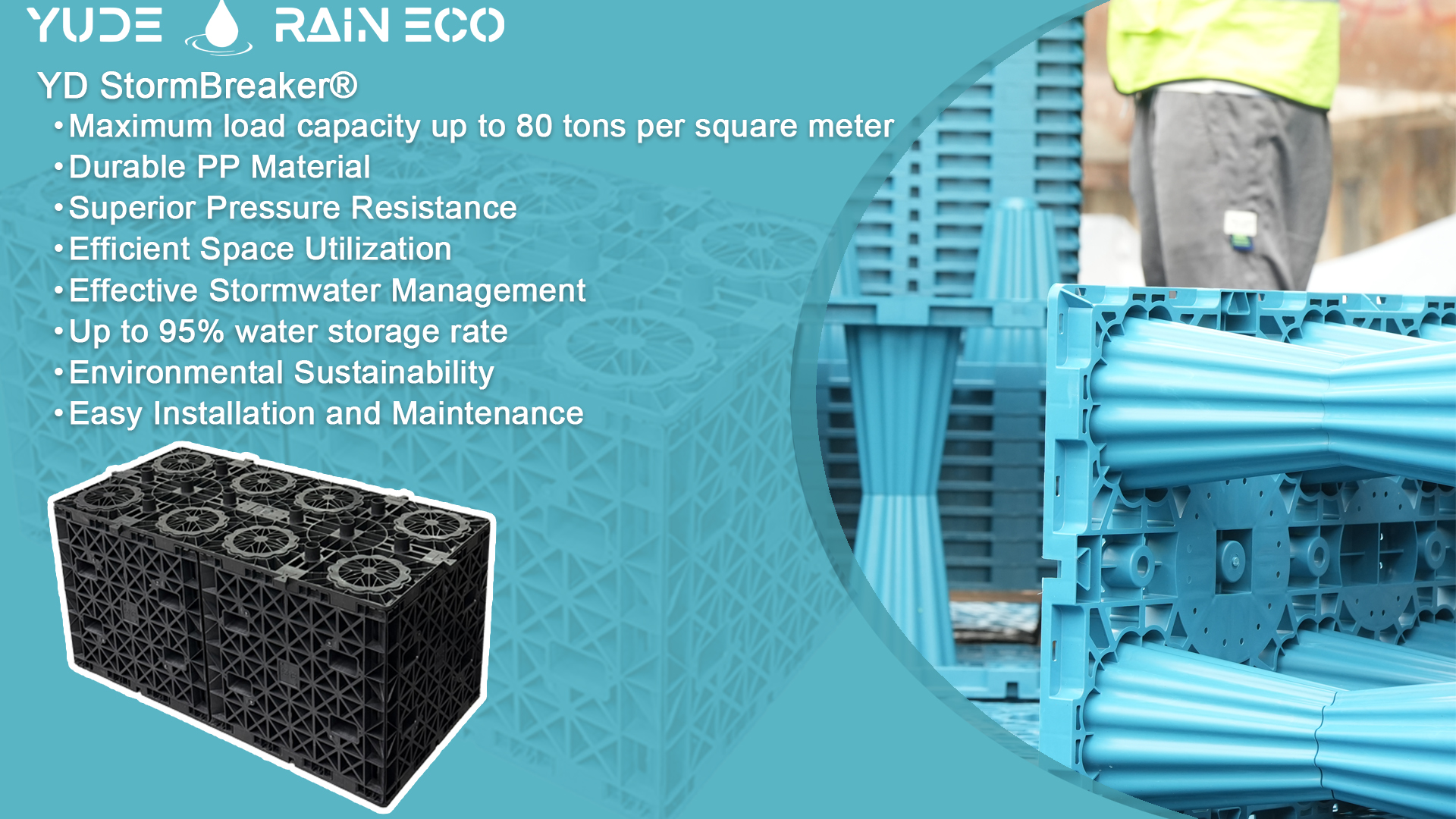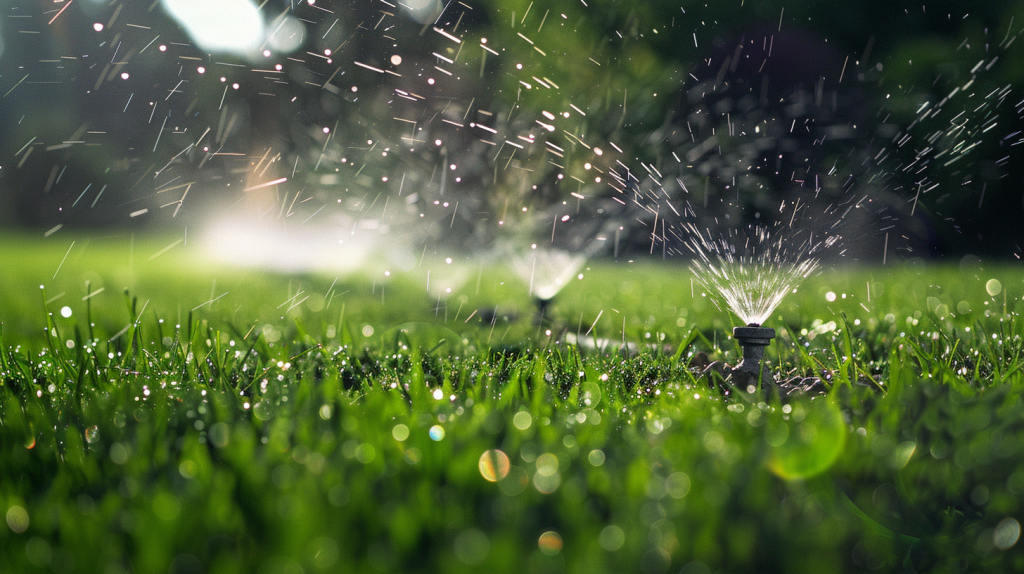I. Introduction: Designing for Resilience and Efficiency in the Built Environment
As cities grow vertically and infrastructure complexity increases, architects, planners, and contractors are facing unprecedented demands create environments that are not only functional but resilient resource efficient and regulation compliant One area gaining fast prominence in this space is the strategic integration of rainwater harvesting and stormwater management systems
Far from being standalone utilities these systems are now embedded into urban masterplans site level drainage strategies and even building footprints Done right they help meet water reuse targets mitigate urban flooding reduce infrastructure costs and improve project sustainability ratings
This guide explores how integrated rainwater and drainage solutions such as those developed by YudeRainEco are being leveraged by professionals to meet future forward design requirements across commercial municipal and mixed use developments
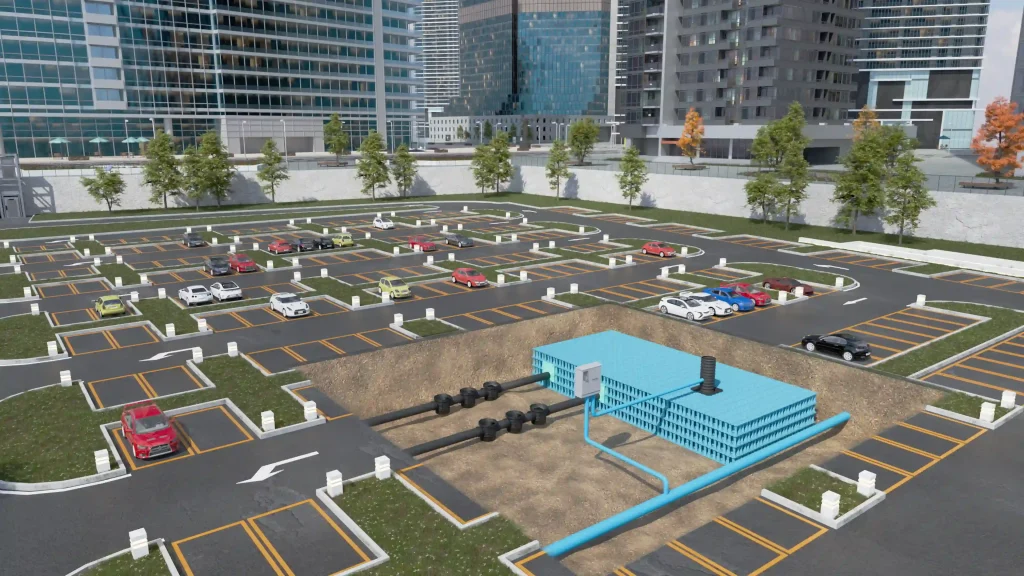
II. Why Rainwater Systems Should Be Part of Your Next Project
Whether involved in a new residential community plan a commercial plaza retrofit or an industrial development water is a critical constraint Managing it poorly leads to
- Flooding and erosion risks
- Escalating municipal water charges
- Delays in permitting due to non compliance
- Poor environmental impact ratings
- Missed green certification opportunities
Integrated rainwater harvesting and attenuation systems provide smart answers to these problems by
- Reducing dependence on mains water
- Managing peak stormwater volumes onsite
- Enhancing LEED BREEAM or WELL scoring
- Aligning projects with ESG and circular economy goals
For large-scale buildings, such as high-rise commercial towers, industrial parks, medical campuses, or transport terminals, rainwater systems play a strategic infrastructural role:
-
Stormwater Mitigation: Large roof and surface areas generate significant runoff that can overwhelm city drains. Onsite detention tanks reduce peak discharge and prevent surface flooding.
-
Operational Water Efficiency: These buildings have high daily non-potable water demand—for toilet flushing, cooling towers, janitorial use, or landscape maintenance. Rainwater harvesting can offset 30–70% of this demand.
-
Permitting and Planning Advantage: Many jurisdictions require on-site retention/detention solutions for high-impact developments. Incorporating rainwater systems from the start helps streamline environmental approvals.
-
Sustainability Branding and Long-Term ROI: Projects that integrate visible, measurable sustainability infrastructure—like rainwater reuse—are better positioned for tenant attraction, higher occupancy rates, and long-term operational savings.
In short, whether you are designing a public institution, commercial center, or a manufacturing hub, rainwater systems are no longer optional—they are foundational to resilient, compliant, and cost-effective development.
III. Project Stakeholder Use Cases
A. Urban Planners and Regional Designers
Urban masterplans increasingly require decentralized water retention systems, especially in high-density or flood-prone zones. Rainwater harvesting can be embedded within:
- Green corridors
- Public right-of-ways
- Transit-linked urban nodes
- Mixed-use site zoning for multi-stage reuse
YudeRainEco provides modular systems that can be phased across development cycles, reducing upfront infrastructure loads while future-proofing hydrological resilience.
B. Architects and Landscape Designers
Architects are using sub-surface rainwater systems to create landscapes that are not just aesthetic, but functional in water management. Integration examples include:
- Green roofs draining into underground tanks
- Courtyards designed to slow, capture, and infiltrate runoff
- Tree pits with subsurface root support and stormwater detention
- Vertical rain channels connected to filtration and reuse units
YD StormBreaker® modules are highly compatible with built-environment aesthetics due to their below-ground profile, minimal access points, and custom-fit configurations.
C. Engineering Contractors and Project Integrators
From drainage engineers to general contractors, modularity and installability are key. YudeRainEco systems reduce site prep time, eliminate wet concrete curing, and offer:
- Pre-engineered loading specs for road or structural placement
- Quick-lock installation with optional maintenance tunnels
- Flexible tank geometries to fit tight or L-shaped sites
- Hydraulic performance documents to assist with permit packages
IV. System Types and Their Application in Architecture and Site Engineering
Rainwater and stormwater systems vary in type and function Understanding how each category aligns with design needs is essential
1. Rainwater Reuse Systems
Use: Collection + storage + non-potable reuse
Applications:
- Flushing toilets in commercial/residential buildings
- Irrigating rooftop gardens and podium terraces
- Cooling tower water for commercial HVAC systems
Key Products: - YD StormBreaker® modular tanks
- Smart filter units and reuse pumps
- UV sterilization options if needed
2. Stormwater Attenuation Tanks
Use: Temporary detention of stormwater to reduce peak runoff
Applications:
- Beneath parking areas, fire lanes, roadways
- Infill development with limited public drainage capacity
Key Benefits: - Reduce stormwater fees
- Satisfy regulatory retention/detention requirements
- Avoid downstream erosion or surcharge
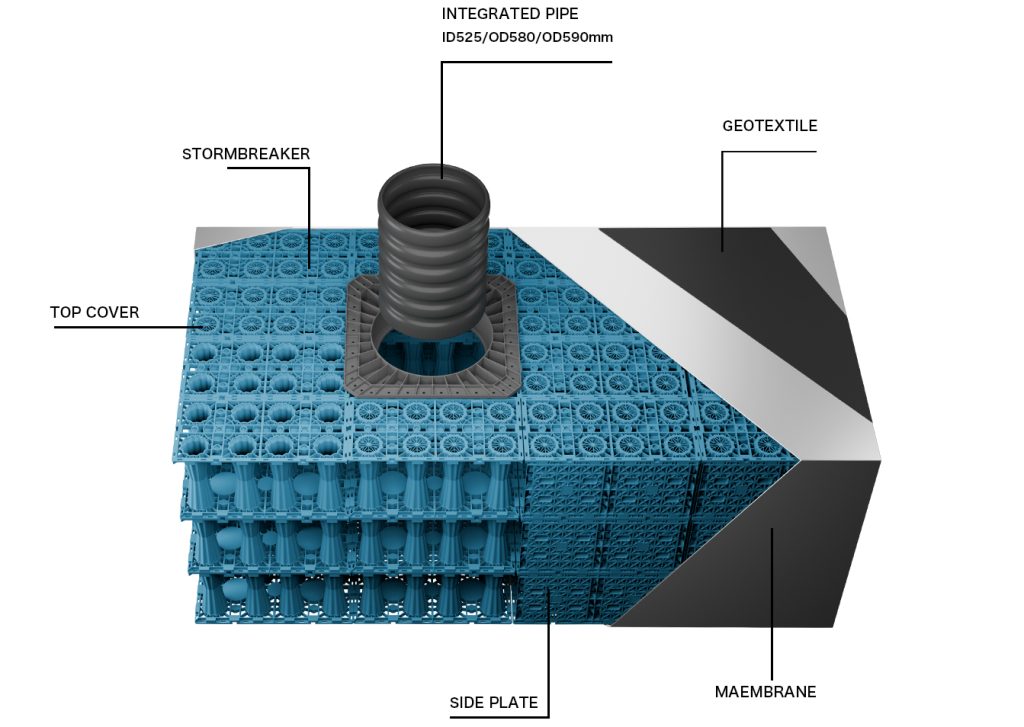
3. Tree Root Pit and Infiltration Systems
Use: Stormwater infiltration and tree health optimization
Applications:
- Urban streetscapes
- Parks and buffer zones
- Transit corridors
Product Highlight: - YD StormVault® root-friendly crate system
- Prevents root uplift and supports stormwater infiltration
- Ideal for SuDS/WSUD-compliant designs
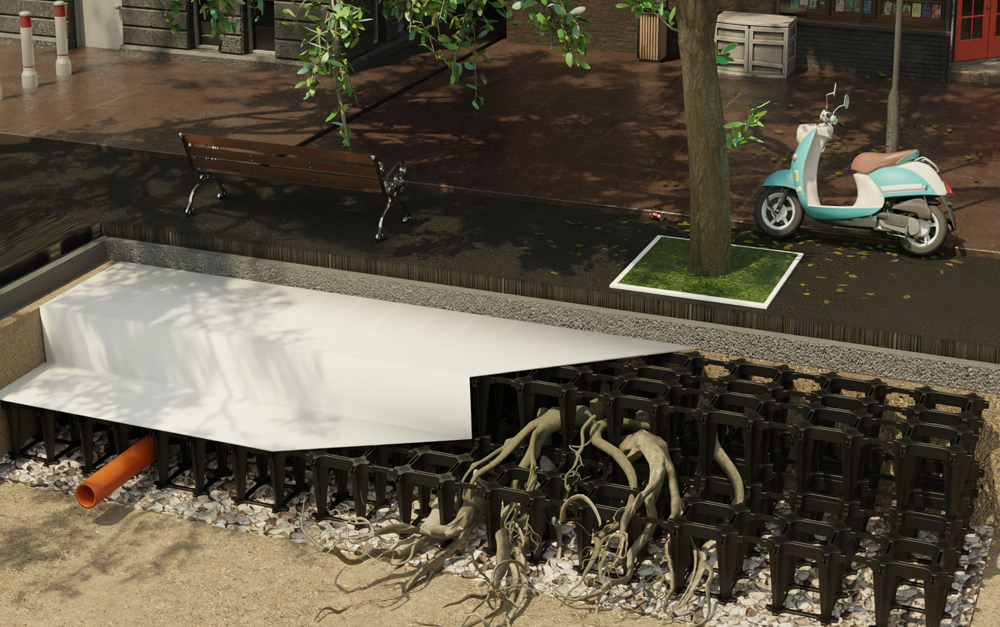
V. Global Standards Green Certifications and Local Compliance
A rainwater system’s performance is not just about storage volume—it must demonstrate compliance with international and local drainage design standards:
- BS 8515 (UK rainwater harvesting standard)
- EN 17152 (Europe)
- WSUD (Australia), SuDS (UK), LID (North America)
- National Green Building Standards across MENA, SEA, China, and LATAM
YudeRainEco supports clients by providing:
- Full engineering specs
- Rainfall runoff calculations
- Pipe and overflow routing diagrams
- Support documents for LEED v4, BREEAM credits, WELL water concepts
VI. Technical Integration Guidelines for Architects and Site Engineering Teams
Seamless integration of rainwater harvesting and stormwater attenuation systems into modern construction projects requires deliberate coordination between disciplines from the early design phase.
1. Early Coordination Between Architecture, MEP, and Civil Teams
Rainwater infrastructure must be considered during schematic design. Architectural massing, landscape grading, and substructure layouts should be coordinated with MEP and civil engineering to ensure optimal tank placement, avoid service clashes, and preserve usable site area.
2. Multifunctional Use of Storage Volumes
A single system can often serve dual or triple purposes:
- Stormwater detention to meet regulatory flow limits
- Temporary irrigation water reserve for green roofs or public plazas
- Passive irrigation and infiltration support for landscape root zones
3. Allowing for Maintenance Access and Operational Longevity
Design layouts should allow for vertical or lateral access for sediment inspection and flushing. Inspection ports can be embedded within planters, permeable pavement panels, or fire lanes.
4. Designing for Vertical Water Capture
Podium terraces, balconies, and green roofs are valuable catchment surfaces. Proper downpipe routing and flow rate control allows this runoff to be directed into shared underground storage units.
5. Incorporating Overflow and Redundancy Systems
Detention tanks should be designed with overflow pathways that discharge to municipal drains or vegetated infiltration zones during extreme rainfall events.
VII. Cost Efficiency and Project ROI
YudeRainEco systems offer substantial CAPEX and OPEX advantages Over traditional concrete tanks our modular solutions require less excavation fewer labor hours and faster installation Additionally maintenance costs are lower due to simple filter systems and accessible inspection points
Rainwater harvesting can deliver ROI in under five years especially in regions with high water tariffs limited infrastructure capacity or stormwater utility fees This economic viability coupled with long term resilience makes it a preferred choice in new builds and renovations alike
VIII. Market Trends and Demand Drivers
Across the globe demand for stormwater smart design is surging due to climate pressures regulatory tightening and end user expectations Key drivers include
- Urban flood and resilience mandates
- High intensity storm frequency
- ESG reporting obligations
- Government incentives for green infrastructure
- Risk mitigation and insurance compliance
Rainwater harvesting is now a required utility element in public projects eco districts and commercial masterplans rather than a sustainability extra
IX. Why Choose YudeRainEco
YudeRainEco provides full cycle support for integrating water sensitive design into architecture infrastructure and landscape projects Our solutions are modular scalable and regulation ready serving clients across Asia the Middle East Europe and beyond
- Crates rated for up to 60 ton loading
- Customizable footprints and stack heights
- Engineering support including runoff modeling and infiltration reports
- BIM CAD kits and international logistics
Our experience includes smart city zones industrial campuses and municipal green belts We collaborate with planners designers and contractors to meet both functional and policy goals
X. Case Studies: Successful Integration in Global Projects
YudeRainEco’s modular rainwater harvesting and attenuation systems have been successfully deployed across diverse project types and geographic regions. These case studies highlight practical outcomes:
1. Industrial Logistics Hub – Guangdong, China
A 2,600 m³ underground tank using YD StormBreaker® 60T modules was installed under a logistics park driveway. The system manages both stormwater attenuation and industrial washwater reuse. Installation was completed in 6 working days with minimal surface disruption.
2. Mixed-Use Campus – Istanbul, Türkiye
Integrated drainage and reuse system for a school campus courtyard. Rainwater is collected from rooftops and reused for irrigation. Compliant with Turkish rainwater reuse regulations and built to withstand seasonal rainfall surges.
3. Hospitality Development – UAE
In arid desert conditions, a modular rainwater retention system was combined with treated greywater reuse for irrigation. The project achieved significant LEED water credits and reduced dependence on desalinated supply.
These examples demonstrate the flexibility and compliance of YudeRainEco systems under real-world constraints.
XI. Lifecycle Assessment and Environmental Impact
A comprehensive lifecycle assessment (LCA) reveals multiple environmental benefits of modular PP-based rainwater systems:
-
Lower Embodied Carbon: Compared to concrete tanks, PP crates reduce embodied CO₂ emissions by up to 80% per cubic meter.
-
Recyclability: All YD StormBreaker® and YD StormVault® modules are made from recycled polypropylene and are fully recyclable at end of life.
-
Minimal Site Disturbance: Faster installation means less fuel consumption and noise on-site.
-
Water Neutrality: By offsetting potable use, the system reduces freshwater extraction and supports long-term aquifer recovery.
When evaluated over a 50-year lifecycle, modular rainwater systems present clear sustainability advantages over traditional materials.
XII. Rainwater Harvesting in Building Information Modeling (BIM)
YudeRainEco provides full support for BIM-based design workflows, enabling design teams to integrate stormwater systems from early concept stages.
Features:
-
Revit-ready families for YD StormBreaker® and YD StormVault® components
-
DWG/DXF libraries for CAD-based drainage layouts
-
Pipe and overflow schematics aligned with MEP coordination
-
3D installation visualizations to assess spatial conflicts and service access
-
Flow simulation tools for hydraulic performance prediction
These tools reduce clash detection issues, optimize site planning, and accelerate permit approval timelines.
XIII. Regional Design Adaptations
Rainfall intensity, soil permeability, and regulatory frameworks vary across regions—requiring tailored design strategies:
-
Middle East: Focus on large-volume underground tanks for detention due to minimal rainfall but high-intensity events. UV-resistant modules are essential due to heat exposure.
-
Southeast Asia: Systems must handle monsoon flows and integrate infiltration to reduce surface flooding. Local codes often require dual-function systems (reuse + attenuation).
-
Europe: Preference for SuDS compliance and biodiversity support. Attenuation + slow release designs dominate, with high emphasis on maintenance access.
YudeRainEco works closely with engineers in each market to match local norms such as EN 17152, WSUD, or regional green building certifications.
XIV. Operation and Maintenance Best Practices
Long-term system performance hinges on routine inspection and proactive maintenance. YudeRainEco recommends the following O&M framework:
Quarterly Tasks:
-
Check filter baskets and replace or backflush if clogged
-
Inspect inspection ports for sediment accumulation
-
Test pumps (if present) and overflow valves
Annual Maintenance:
-
Jet flush sediment traps and soakaway zones
-
Verify system watertightness and structural integrity
-
Clean access covers and re-seal if necessary
Smart Monitoring (optional):
-
Add flow sensors and tank level indicators
-
Remote alerts for blockages or overflow during storms
All YudeRainEco systems are designed for low OPEX and straightforward access through integrated ports and tunnels.
XV. Financing Models and Incentives
Rainwater systems can be funded through a mix of public and private mechanisms, depending on jurisdiction:
-
Municipal Grants/Subsidies: Many cities provide cash rebates or tax incentives for on-site detention or reuse infrastructure.
-
Green Bonds and Sustainability Loans: Developers may access ESG-linked funding for installing certified water management solutions.
-
EPC or Design-Build Partnerships: Bundling system design, installation, and O&M into a performance-based contract reduces upfront burden.
-
Utility Fee Offsets: In regions with stormwater drainage fees (e.g., Germany, the U.S.), users get reductions for reducing impervious runoff.
YudeRainEco supports clients with ROI models, grant applications, and utility negotiations.
XVI. Integration with Smart City Infrastructure
Smart rainwater systems form part of the digital backbone of future cities. Integration opportunities include:
-
IoT Monitoring: Real-time flow data, sediment levels, and pump status via sensors and cloud dashboards
-
Weather-linked Control: Automatically adjusting outlet flow or tank fill rates based on forecasted rainfall
-
City Dashboard Integration: Pushing data to municipal planning systems or public transparency portals
-
Digital Twin Applications: Feeding drainage performance data into larger city-wide simulation models
These features enable predictive maintenance, optimize emergency response during storms, and align infrastructure with data-driven urban management goals.
XVII. Designing Smarter Building Resilient
Rainwater harvesting is a key component of future ready development Planning and executing water management from design phase ensures sustainability compliance and cost optimization
YudeRainEco is ready to help architects engineers and contractors integrate smart water solutions into their projects from concept to delivery
-
Request tender documentation
-
Hydraulic calculations
-
Budget proposals
-
CAD or BIM component kits
-
Case references by region
FAQ
Q What is the difference between rainwater harvesting and stormwater attenuation
A Rainwater harvesting stores water for reuse while attenuation temporarily stores and controls flow to reduce flood risk
Q Can these systems be installed under roads and pavements
A Yes YudeRainEco modules are load tested up to 60 tons and can be installed under vehicular areas
Q How long do the systems last
A Our recycled PP modules have a design life of over 50 years when installed correctly and maintained regularly
Q Are the systems eligible for green building credits
A Yes our systems can contribute to LEED BREEAM and WELL certification through water reuse and stormwater control credits
Q What support does YudeRainEco provide
A We offer site analysis technical documentation hydraulic modeling CAD BIM kits and end to end project support worldwide

